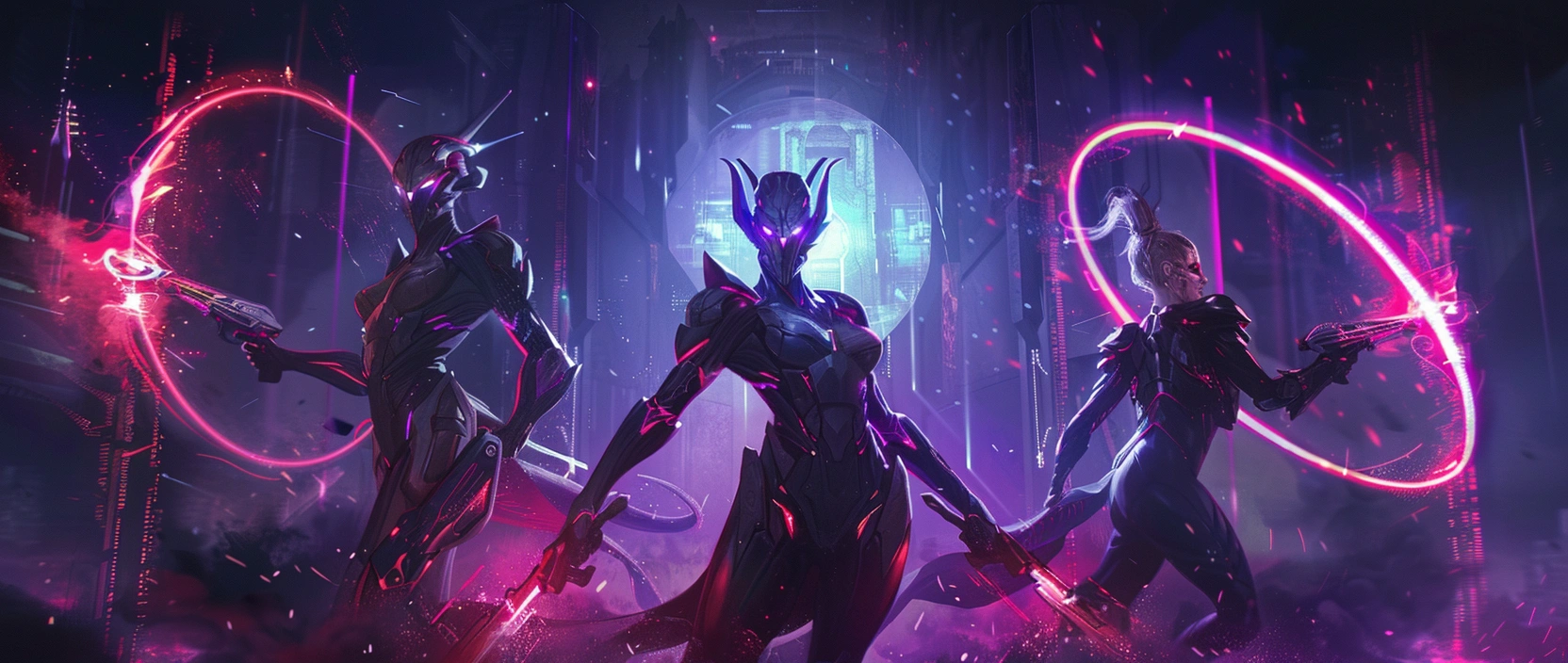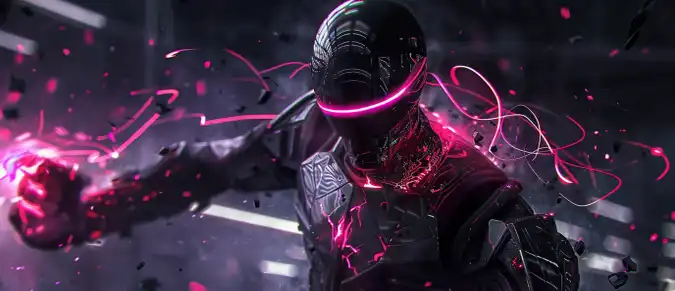Spinblade is a blockchain-based game that combines spinner battle mechanics, NFT customization, and a Play-to-Earn model. The project reimagines traditional gaming by adding transparency, true asset ownership, and reward opportunities through tournaments and real-time battles. With its Polygon integration, interactive NFTs, and a robust in-game economy, Spinblade forms a new branch of Web3 gaming focused on entertainment, collection value, and long-term ecosystem growth. The game appeals both to Web3 newcomers and experienced crypto users, offering flexible progression, competitive gameplay, and the ability to monetize time spent in the ecosystem. This makes Spinblade one of the most promising contenders in the competitive Web3 PvP gaming segment.
Contents
- The Concept of Spinblade and the Origins of the Project
- Gameplay Mechanics and User Features
- NFT Infrastructure and Technical Architecture
- Economic Model, Rewards, and Incentives
- Advantages, Challenges, and Market Positioning
- Conclusion

1. The Concept of Spinblade and the Origins of the Project
Spinblade emerged as an attempt to merge collectible toy mechanics with Web3 technologies, resulting in a new form of competitive PvP gameplay. Unlike typical NFT games where tokens serve only as ownership markers, Spinblade transforms each NFT into a functional, interactive asset composed of multiple components. This unlocks deep customization options and introduces meaningful strategic decisions based on equipment. Spinblade aims to replicate the thrill of physical spinner battles in a digital environment, where every spin, impact, and rotation is influenced by the player's configuration choices.
The creators wanted to build a game where NFTs are not static illustrations but dynamic elements that directly affect gameplay. Players can assemble unique spinners, enhance their performance, compete in arenas, and earn rewards through skill-based victories. This model blends entertainment with digital economics, making ownership valuable both inside and outside the game. Such a structure increases long-term engagement and encourages players to continuously expand their inventory.
Spinblade also sets out to attract both Web3 users and mainstream gamers. With simplified onboarding and intuitive gameplay, new players can join without in-depth blockchain knowledge while gradually exploring the economic layer. Ultimately, the concept combines nostalgic game design with modern blockchain tools, creating a hybrid experience where digital assets retain value beyond the game environment. This blend of tradition and innovation forms the foundation of Spinblade’s unique identity.
2. Gameplay Mechanics and User Features
Spinblade offers a wide range of tools for players to engage with its ecosystem. The gameplay mechanics are designed to enhance involvement, tactical thinking, and competitive depth. Unlike simplified P2E models, Spinblade focuses on intense battles, strategic customization, and player skill. This creates a layered gameplay experience, allowing players to experiment with countless component combinations. Each user can form a personal combat identity by selecting optimal configurations for different arenas and opponents.
Main Spinblade Gameplay Features:
- Spinner assembly and customization. Players collect NFT components—rings, discs, and tips—to build their own battle machines.
- PvP battles. Real-time combat against other players using varying strategies and builds.
- Tournaments and rankings. Recurring competitive events with rare rewards and seasonal ladders.
- Marketplace. Buying and selling NFT parts, enabling players to build economic strategies.
- Interactive NFTs. Users can spin, rotate, and inspect 3D models, enhancing immersion.
This robust feature set transforms Spinblade into an ecosystem where economic, combat, and collectible elements coexist. The ability to mix and match components creates a high degree of gameplay depth and personalization. With carefully designed stats, players can refine their tactics, optimize loadouts, and plan long-term inventory development. This results in a more organic and sustainable progression system compared to many Web3 titles.
3. NFT Infrastructure and Technical Architecture
Spinblade’s technological foundation is engineered to support scalability, low fees, and maximum NFT interactivity. Leveraging the Polygon network provides fast transactions and minimal costs—critical for active game economies that require frequent on-chain operations. This ensures a smooth experience, even with a growing player base. The development team also optimized 3D NFT rendering to maintain a seamless experience across devices, further enhancing user accessibility.
Key Architectural Components of Spinblade:
| Component | Description |
|---|---|
| Polygon Blockchain | Offers fast, low-fee transactions ideal for Web3 gaming platforms. |
| Interactive NFT System | Allows players to rotate, inspect, and visually interact with NFT assets. |
| Item Box Mechanics | The First Edition box system provides unique spinners and exclusive components. |
| Marketplace Module | Enables trading of parts, spinners, arenas, and other digital assets. |
| PvP Engine | Handles combat simulation, stat calculations, and outcome determination. |
Spinblade’s architecture stands out because its NFTs behave like real, manipulable objects rather than static images. This creates a unique digital ownership experience and enhances immersion. The underlying technology also enables future expansions, new NFT categories, and gameplay extensions. Such scalability makes Spinblade well-prepared for long-term growth and mass adoption.

4. Economic Model, Rewards, and Incentives
The economic structure of Spinblade is built around Play-to-Earn mechanics combined with collectible NFT value. Users can earn rewards through battles, missions, events, and trading rare items on the marketplace. Early investment enabled the team to expand features and refine the economic system. The developers emphasize sustainability, aiming to avoid the reward inflation common in many P2E projects.
The incentive system encourages continuous engagement: rare components, unique skins, in-game bonuses, and special rewards help keep player interest high. Instead of relying solely on token emissions, Spinblade builds value through scarcity and uniqueness of components. This layered approach maintains demand for collectible items even outside reward loops. Seasonal updates introduce fresh progression paths and help stabilize the overall economy.
The team focuses on balancing user growth, asset value, and reward mechanisms. A well-designed economic model can support strong long-term community interest and healthy market dynamics. This makes Spinblade highly competitive among Web3 games that strive for complex, sustainable economic ecosystems.
5. Advantages, Challenges, and Market Positioning
Spinblade stands out in the Web3 gaming market through its interactive NFTs, dynamic PvP battles, and collectible mechanics. The spinner concept is instantly recognizable, making onboarding easier for mainstream gamers. At the same time, the project offers deeper strategies and systems than many casual blockchain titles, giving it an advantage in both competitive and collectible niches.
Despite its strengths, Spinblade faces challenges such as competition in the NFT gaming space, the need for ongoing content updates, and reliance on user engagement. To maintain momentum, the team must continuously expand gameplay depth, improve combat flow, and support the economy surrounding NFT components. Strategic partnerships and community expansion will also be critical for long-term success.
If the developers continue innovating and retaining player attention, Spinblade could become one of the most recognizable titles in Web3 gaming. Its strong concept and refined architecture provide a solid foundation for broader adoption. With sustained development, Spinblade has the potential to compete not only with Web3 games but also with traditional mobile PvP titles by offering true digital ownership and a sustainable economy.
6. Conclusion
Spinblade demonstrates how traditional game mechanics can be reimagined through blockchain and NFT technologies. The project integrates strategy, collection, economic progression, and competition into a cohesive experience. Its architecture brings together gamers, collectors, and digital asset enthusiasts, defining a new standard for interactive NFTs. Spinblade proves that NFT assets can be functional and meaningful, not merely decorative.
Even in its early stages, Spinblade shows strong potential for large-scale growth. If the team continues improving the economy, updating gameplay, and cultivating an active community, the game could solidify its position in the next generation of Web3 titles. Spinblade illustrates how games can evolve by merging entertainment with the lasting value of digital assets. Over time, it could grow into a full-fledged metaverse merging battles, collections, and a player-driven marketplace.




